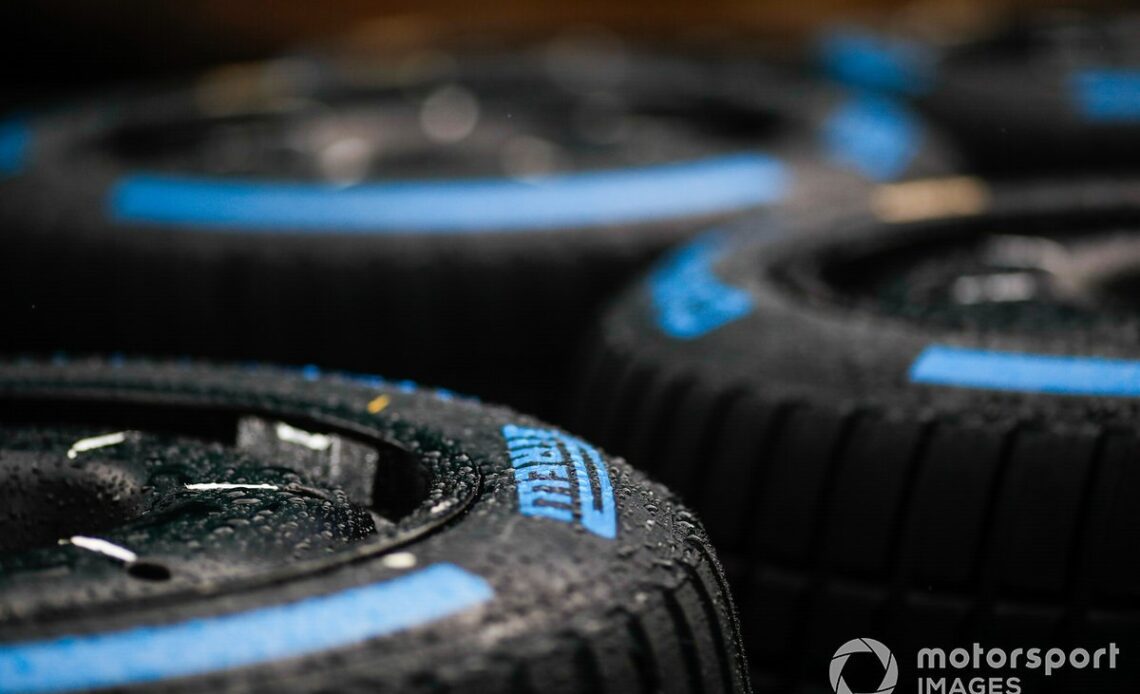The change of specification was formally approved at today’s meeting of the F1 Commission, which was held at the F1 organisation’s HQ in London.
An F1/FIA statement said that “following successful testing by Pirelli, with the support of teams, Pirelli have arrived at a wet weather tyre which is much more performant than the previous specification – this tyre type does not require the use of blankets.”
The new specification has been introduced following dedicated wet weather test sessions undertaken by several teams over the winter and originally aimed at 2024, when blankets are set to be banned for both wet and dry tyres.
Pirelli wet tyres
Photo by: Zak Mauger / Motorsport Images
Wet conditions and especially visibility have been a major talking point in recent years after several controversial races, notably the 2021 Belgian GP.
The F1 Commission also confirmed that the new wet weather package project – which will see cars fitted with wheel arches designed to reduce spray – will be tested on track in the middle of this season.
The FIA has already conducted its own CFD research, but the teams now have been given the official go-ahead to do wind tunnel and CFD work on the impact of the arches outside of the both the aerodynamic testing restrictions and the cost cap.
The statement noted: “Additionally the FIA is grateful for the offers of support made by the teams for the wet weather package project, as presented in the last F1 Commission meeting.
“A technical directive is being prepared to allow teams to do such work outside the aerodynamic testing restriction (ATR) limits and outside the cost cap. Track testing will be planned for the second or third quarter of 2023.”
At the end of last year new FIA single seater director Nikolas Tombazis gave some insight into the project.
“We only think it’s going to be something that gets used on a couple of occasions a year, maybe three, that sort of thing,” he noted.
“We don’t want it to be that every time there’s a drop of rain, then suddenly you have to fit these things.
“We have done a lot of CFD simulations, because we want to make sure the effect of these devices is relatively small on the overall aerodynamics. There still is an effect, but not a massive one.
“Also, we are simulating the droplets of the rain and so on, and seeing how it affects spray. What is a bit of a challenge in the simulations is to determine the relative proportion of what…
Click Here to Read the Full Original Article at Motorsport.com – Formula 1 – Stories…

